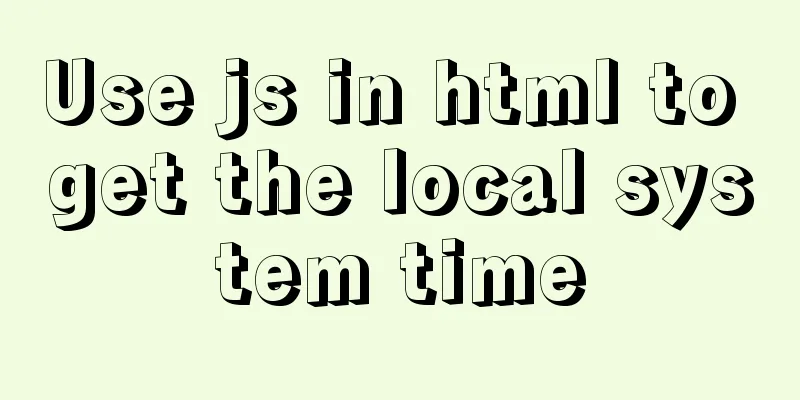Notes on using $refs in Vue instances

|
During the development process, we often use the instance's vm.$refs(this.$refs) to obtain components registered through ref and perform corresponding operations. However, there are cases where elements cannot be obtained. The root cause is that $refs can only obtain elements after being mounted (rendered).
For example, in this case, it is normal that no node can be obtained if the flag switches from a true value to a false value, because if v-if is a false value, then the node will not be rendered. However, if you switch from a false value to a true value, you may not be able to get the node. This is because rendering takes time, which can usually be solved using $nextTick().
...
<el-table v-if="flag" ref="table">
<el-table-column prop="prop1"></el-table-column>
<el-table-column prop="prop2"></el-table-column>
</el-table>
...
export default {
methods: {
this.$refs.table.XXX()
}
}But there is a very special case. When the page is rendered for the first time, $refs cannot get a value. At this time, we need to consider v-show to hide and display component elements. Because v-show is hidden through CSS display:none, it will be rendered at the beginning and the element will definitely be obtained. Supplement: Examples and tips for using ref ($refs) in Vue.js 1. Usage summarized according to official documents:Looking at the ref section in the Vue.js documentation, I summarized the usage of ref for later reference. 1. ref is used on external components HTML part <div id="ref-outside-component" v-on:click="consoleRef"> <component-father ref="outsideComponentRef"> </component-father> <p>ref is on the outer component</p> </div> js part
var refoutsidecomponentTem = {
template:"<div class='childComp'><h5>I am a child component</h5></div>"
};
var refoutsidecomponent = new Vue({
el:"#ref-outside-component",
components:{
"component-father":refoutsidecomponentTem
},
methods:{
consoleRef:function () {
console.log(this); // #ref-outside-component vue instance console.log(this.$refs.outsideComponentRef); // div.childComp vue instance }
}
});2. Ref is used on external elements HTML Part <!--ref is on the outer element--> <div id="ref-outside-dom" v-on:click="consoleRef" > <component-father> </component-father> <p ref="outsideDomRef">ref is on the outside element</p> </div> JS part
var refoutsidedomTem = {
template:"<div class='childComp'><h5>I am a child component</h5></div>"
};
var refoutsidedom = new Vue({
el:"#ref-outside-dom",
components:{
"component-father":refoutsidedomTem
},
methods:{
consoleRef:function () {
console.log(this); // #ref-outside-dom vue example console.log(this.$refs.outsideDomRef); // <p> ref is on the outside element</p>
}
}
});3. Ref is used on the elements inside --- local registration component HTML Part <!--ref on the element inside--> <div id="ref-inside-dom"> <component-father> </component-father> <p>ref is on the element inside</p> </div> JS part
var refinsidedomTem = {
template:"<div class='childComp' v-on:click='consoleRef'>" +
"<h5 ref='insideDomRef'>I am a child component</h5>" +
"</div>",
methods:{
consoleRef:function () {
console.log(this); // div.childComp vue instance console.log(this.$refs.insideDomRef); // <h5 >I am a child component</h5>
}
}
};
var refinsidedom = new Vue({
el:"#ref-inside-dom",
components:{
"component-father":refinsidedomTem
}
});4. Ref is used on the elements inside --- global registration component HTML Part <!--ref on the element inside--global registration--> <div id="ref-inside-dom-all"> <ref-inside-dom-quanjv></ref-inside-dom-quanjv> </div> JS part
Vue.component("ref-inside-dom-quanjv",{
template:"<div class='insideFather'> " +
"<input type='text' ref='insideDomRefAll' v-on:input='showinsideDomRef'>" +
" <p>ref on the element inside--globally registered</p> " +
"</div>",
methods:{
showinsideDomRef:function () {
console.log(this); //This is actually div.insideFather
console.log(this.$refs.insideDomRefAll); // <input type="text">
}
}
});
var refinsidedomall = new Vue({
el:"#ref-inside-dom-all"
});
2. Pitfalls to watch out for1. If you want to add different refs through v-for traversal, remember to add the : sign, that is, :ref = a variable; This is the same as other attributes. If it is a fixed value, you don't need to add a : sign. If it is a variable, remember to add a : sign.
2. Add ref by :ref = a variable (that is, add :). If you want to get the ref, you need to add [0], such as this.$refs[refsArrayItem] [0]. If it is not :ref = a variable but ref = a string, you do not need to add it, such as this.$refs[refsArrayItem]
The difference between adding and not adding [0] - not expanded
The difference between adding and not adding [0] - Expanded 3. When you want to get the DOM after the element ui dialog box is opened, you should use $nextTick instead of directly using this.$refs. imgLocal2:
console.log('outside this.$refs.imgLocal2', this.$refs.imgLocal2);
setTimeout(() => {
console.log('this.$refs.imgLocal2 setTimeout', this.$refs.imgLocal2);
}, 500); // Not recommended this.$nextTick(() => {
console.log('this.$refs.imgLocal2 $nextTick', this.$refs.imgLocal2);
});
The above is my personal experience. I hope it can give you a reference. I also hope that you will support 123WORDPRESS.COM. If there are any mistakes or incomplete considerations, please feel free to correct me. You may also be interested in:
|
<<: Example of how to set WordPress pseudo-static in Nginx
>>: What are the new features of Apache Spark 2.4, which will be released in 2018?
Recommend
How to configure the same domain name for the front and back ends of nginx
This article mainly introduces the method of conf...
Markodwn's detailed explanation of the idea of synchronous scrolling with title alignment
Preface I need to add a synchronized scrolling fe...
A brief introduction to Linux environment variable files
In the Linux system, environment variables can be...
MySQL Order By Multi-Field Sorting Rules Code Example
Say it in advance On a whim, I want to know what ...
Practical method of deleting a row in a MySql table
First, you need to determine which fields or fiel...
Let’s take a look at JavaScript precompilation (summary)
JS running trilogy js running code is divided int...
Detailed tutorial on deploying Django project using Docker on centos8
introduction In this article, we will introduce h...
Solution to the problem of too high penetration of input and textarea levels in WeChat applet
The WeChat mini-program native components camera,...
Detailed explanation of creating a view (CREATE VIEW) and usage restrictions in MySQL
This article uses examples to describe the creati...
Docker configuration Alibaba Cloud image acceleration pull implementation
Today I used docker to pull the image, but the sp...
Example of Vue transition to achieve like animation effect
Table of contents Results at a Glance Heart Effec...
XHTML Getting Started Tutorial: What is XHTML?
What is HTML? To put it simply: HTML is used to m...
CSS to achieve Cyberpunk 2077 style visual effects in a few steps
background Before starting the article, let’s bri...
React's context and props explained
Table of contents 1. context 1. Usage scenarios 2...
Docker-compose one-click deployment of gitlab Chinese version method steps
1. Introduction to gitlab Gitlab official address...














